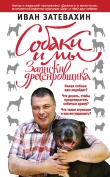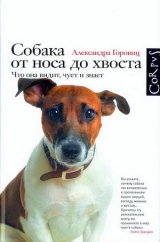
Текст книги "Собака от носа до хвоста. Что она видит, чует и знает"
Автор книги: Александра Горовиц
Жанр:
Домашние животные
сообщить о нарушении
Текущая страница: 16 (всего у книги 17 страниц)
Заключение
Я и моя собака
Я перебираю ее фотографии, на которых невозможно рассмотреть глаза на фоне темной шерсти. В существовании Пумперникель всегда было нечто загадочное. Мне так и не удалось понять, каково это – быть собакой. Пумперникель никогда не признавалась в этом открыто и хранила тайну. Но я чувствую себя польщенной: мне дозволили переступить черту.
Пумперникель вошла в мою жизнь в августе 1990 года. Мы проводили вместе почти каждый день вплоть до ее смерти в ноябре 2006 года. Она до сих пор в моих мыслях.
Пумперникель изумляла; я и не предполагала, что собаке удастся настолько меня изменить. Мне, правда, очень быстро стало ясно, что понятие «собака» отражает далеко не все грани ее характера и не вполне описывает радость от знакомства с ней. Вскоре я начала испытывать радость от одного лишь общества Пумперникель и гордилась, наблюдая за ней. Она была энергичной, терпеливой, упорной и добродушной – и все это одновременно. Она не сомневалась в своей правоте, но охотно постигала новое (например, интересовалась кошками – хотя те не проявляли ни малейшего любопытства). Пумперникель была исполнена жизни, отзывчива и весела.
Я не рассматривала Пумперникель как подопытное существо. Тем не менее я брала ее с собой, когда отправлялась наблюдать за другими собаками. Она нередко служила мне пропуском на собачьи площадки – туда, где к человеку без собаки одинаково подозрительно относятся и псы, и их хозяева. Пумперникель присутствует на многих видеозаписях собачьих игр. Она то появляется в кадре, то исчезает: я следила не за ней, а за ее ничего не подозревающими партнерами. Я жалею, что, ведя съемку, игнорировала Пумперникель. Хотя я запечатлела желаемое и после тщательного анализа записей социального взаимодействия у собак смогла раскрыть их некоторые удивительные способности, сейчас мне недостает впечатлений о моей собаке.
Подозреваю, что всякий хозяин согласится со мной в том, что его собака уникальна. Здравый смысл твердит, что не каждая собака является неповторимой, иначе неповторимость стала бы заурядной чертой. Но те, кто так говорит, ошибаются: уникальна история жизни, которую пишет владелец собаки в соавторстве со своим питомцем; уникально знание человека о его собаке. Я – не исключение. Бихевиористский подход к собакам основан исключительно на точке зрения хозяина – на опыте, который он почерпнул из общения с собакой.
Состарившись, Пумперникель похудела и поседела. Во время прогулок она то и дело останавливалась отдохнуть. Я видела ее разочарование, смирение, отвергнутые влечения, раздумья, самоконтроль и, наконец, умиротворение. Но когда я смотрела ей в глаза, Пумперникель снова становилась безымянным щенком, который некогда позволил мне надеть на него слишком большой ошейник и отвести домой – за тридцать кварталов от собачьего приюта. С тех пор мы преодолели вместе тысячи миль.
Потеряв Пумперникель, я встретила Финнегана. Теперь я представить не могу жизни без этого длинноногого похитителя мячей, любителя поспать у меня на коленях. Финнеган совершенно не похож на Пумперникель. Тем не менее знание, почерпнутое у нее, бесконечно обогатило мою жизнь с Финнеганом.
Пумперникель подняла голову и повернулась ко мне. Ее нос был темным и влажным, взгляд – невозмутимым. Она начала вылизывать передние лапы, задевая пол языком и брякая ошейником. Уши, прижатые к голове, слегка напоминали увядшие листья. Пальцы на передних лапах у Пумперникель были слегка раздвинуты; она согнула их, будто готовясь вскочить. Но она не вскочила. Она лениво зевнула. Потом опустила голову между лап, шумно выдохнула и закрыла глаза.

Примечания и источники
Я часто обращалась к следующим трудам, посвященным поведению собак, их когнитивным способностям, а также дрессировке. Рекомендую всем, кому небезразличны собаки, прочитать эти книги, совмещающие научную обстоятельность с доступностью изложения.
Lindsay S. R. (2000, 2001, 2005). Handbook of applied dog bebavior and training(3 vols). Ames, Iowa: Blackwell Publishing.
McGreevy P., Boakes R. A. (2007) . Carrots and sticks: Principles of animal training.Cambridge: Cambridge University Press.
Miklysi Б. (2007). Dog behavior, evolution, and cognition.Oxford: Oxford University Press.
Serpell J., ED. (1995). The domestic dog: Its evolution, behaviour and interactions with people.Cambridge: Cambridge University Press.
Вступление
О величине головного мозга у животных разных видов:
Rogers L. (2004). Increasing the brain’s capacity: Neocortex, new neurons, and hemispheric specialization. In: Rogers L. J., Kaplan G., eds. Comparative vertebrate cognition: Are primates superior to nonprimates?(pp. 289–324). New York: Kluwer Academic/Plenum Publishers.
О мире, в котором живут собаки
О дельфиньей «улыбке»:
Bearzi, М., & Stanford, С.В. (2008). Beautiful minds: The parallel lives of Great Apes and dolphins.Cambridge, MA: Harvard University Press.
О значении оскала у шимпанзе:
Chadwick-Jones, J. (2000). Developing a social psychology of monkeys and apes.East Sussex, UK: Psychology Press.
О значении приподнятых бровей у обезьян:
Kyes R. C., Candland D. K. (1987). Baboon (Papio hamadryas)visual preferences for regions of the face. Journal of Comparative Psychology, 4,345–348. De col1_0, Dindo М., Freeman C. A., & Hall M. J. (2005). The monkey in the mirror: Hardly a stranger. Proceedings of the National Academy of Sciences, 102,11140-11147.
О поведении цыплят:
Febrer, К., Jones, T.A., Donnelly, C.A., & Dawkins, M.S. (2006). Forced to crowd or choosing to cluster? Spatial distribution indicates social attraction in broiler chickens. Animal Behaviour,72, 1291–1300.
О позах доминирования у волков:
Fox M. W. (1971). Behaviour of wolves, dogs and related canids.New York: Harper & Row.
Об экспериментах с использованием электрического тока:
col1_0, Maier S. F., & Geer J. H. (1965). Alleviation of learned helplessness in the dog .Journal of Abnormal Psychology, 73,256–262.
О том, что такое умвельт.
Von UEXKbLL J. (1957/1934). A stroll through the worlds of animals and men. Notes and Sources. In: Schiller C. H., ed. Instinctive behavior: The development of a modem concept(pp. 5-80). New York: International Universities Press.
О крысах-пессимистах:
Harding E. J., Paul E. S., & Mendl M. (2004). Cognitive bias and affective state. Nature, 427,312.
О собачьих поцелуях:
Fox (1971)
О чувстве вкуса у собак:
Lindemann В. (1996). Taste reception. Physiological Reviews,76, 719–766. Serpell (1995)
Чарльз Дарвин о собачьей привязанности:
Darwin С. (1872/1965). The expression of the emotions in man and animals.Chicago: University of Chicago Press, p. 118.
«Принадлежащая дому»
О семействе псовых:
Macdonald D. W., Sillero-Zubiri С. (2004). The biology and conservation of wild canids.Oxford: Oxford University Press.
О собаках и изюме:
McKnight К. (Feb. 2005). Toxicology brief: Grape and raisin toxicity in dogs. Veterinary Technician, 26, 135–136.
Об этимологии слова «домашний»:
В толковом словаре 1755 г-> составленном Сэмюелем Джонсоном, указано, что «домашний» (англ. domestical, domestick)означает в том числе принадлежность к определенному дому, непубличность (англ. «belonging to the house; not relating to things publick»).
Об экспериментах по одомашниванию лисиц:
Belyaev D. K. (1979). Destabilizing selection as a factor in domestication. Journal of Heredity, 70,301–308.
Trut L. N. (1999). Early canid domestication: The farm-fox experiment. American Scientist, 87, 160–169.
Об анатомии и поведении волков:
Mech D. L., Boitani L. (2003). Wolves: Behavior, ecology, and conservation.Chicago: University of Chicago Press.
Об одомашнивании
Есть много гипотез на этот счет. Представленная в этой книге подтверждается, кроме прочего, новейшими исследованиями мтДНК. См.: Coppinger, R., & Coppinger, L. (2001). Dogs: A startling new understanding of canine origin, behavior, and evolution.New York: Scribner. Clutton-Brock J. (1999). A natural history of domesticated mammals,2nd ed. Cambridge: Cambridge University Press.
О предполагаемом времени одомашнивания собак:
Ostrander Е. А., Giger U., & Lindblad-Toh К., eds. (2006). The dog and its genome.Cold Spring Harbor, NY: Cold Spring Harbor Laboratory Press.
Vila C., Savolainen P., Maldonado J. E., Amorim I. R., Rice J. E., Honeycutt R. L., Crandall K. A., Lundeberg J., & Wayne R. K. (1997). Multiple and ancient origins of the domestic dog. Science, 2/6,1687–1689.
О развитии:
Mech & Boitani (2003)
Scott J. P., Fuller J. L. (1965). Genetics and the social behaviour of the dog.Chicago: University of Chicago Press.
О пуделях и хаски:
Feddersen-Petersen, D., in: MiKLysi (2007)
Об эксперименте с веревкой:
MiKLysi Б., Kubinyi Е., Top6l J., G6csi М., Vir6nyi Zs., & Cs6nyi V. (2003). A simple reason for a big difference: Wolves do not look back at humans, but dogs do. Current Biology, lj,763–766.
О зрительном контакте:
Fox (1971)
Serpell J. (1996). In the company of animals: A study of human-animal relationships.Cambridge: Cambridge University Press.
О породах собак:
Garber М. (1996). Dog love.New York: Simon & Schuster.
Ostrander et al. (2006)
О соотношении глубины грудной клетки и длины ног у различных пород:
Brown С. М. (1986). Dog locomotion and gait analysis.Wheat Ridge, CO: Hoflin Publishing Ltd.
О фараоновых собаках и ивисских борзых:
Parker H. G., Kim L. V., Sutter N. B., Carlson S., Lorentzen T. D., Malek T. B., Johnson G. S., Df. France H.B., Ostrander E. A., & Kruglyak L. (2004). Genetic structure of the purebred domestic dog. Science, 304,1160–1164.
О классификации и стандартах пород:
Crowley J., Adelman В., eds. (1998). The complete dogbook,19th edition. Publication of the American Kennel Club. New York: Howell Book House.
О геноме собаки:
KlRKNESS E.F., ET AL. (2003). The dog genome: Survey sequencing and comparative analysis. Science, joi,1898–1903.
Lindblad-Toh K., ET AL. (2005). Genome sequence, comparative analysis and haplotype structure of the domestic dog. Nature, 4)8,803–819. Ostrander et al. (2006)
Parker et al. (2004)
Об агрессивных и неагрессивных породах:
Duffy D. L., Hsu Y., & Serpell J. A. (2008). Breed differences in canine aggression. Applied Animal Behavior Science, 114,441–460.
О поведении овчарок:
Coppinger & Coppinger (2001)
О волчьей стае:
Mech, L.D. (1999). Alpha status, dominance, and division of labor in wolf packs. Canadian Journal of Zoology,77, 1196–1203.
Mech & Boitani (2003), особенно: Mech, L.D., & Boitani, L. Wolf social ecology (pp. 1-34); Packard, J. M. Wolf behavior: Reproductive, social, and intelligent (pp. 35–65).
О собаках и волках:
Miller, D. (1981). Track Finder.Rochester, NY: Nature Study Guild Publishers.
О бродячих собаках:
Beck, A.M. (2002). The ecology of stray dogs: A study of free-ranging urban animals.West Lafayette, IN: NotaBell Books.
Об итальянских бродячих собаках:
Cafazzo S., Valsecchi P., Fantini C., & Natoli E. (2008). Social dynamics of a group of free-ranging domestic dogs living in a suburban environment. Paper presented at Canine Science Forum, Budapest, Hungary.
О социализации у волков:
Kubinyi Е., Vir6nyi Zs., & MiKLysi Б. (2007). Comparative social cognition: From wolf and dog to humans. Comparative Cognition & Behavior Reviews, 2,26–46.
«Хаос впечатлени»
См.: James W. (1890). Principles of psychology.New York: Henry Holt & Co., p. 488.
«Бесформенный комок плоти…»
Pliny the Elder. Natural history(tr. H. Rackham, 1963), Vol. 3. Cambridge, MA: Harvard University Press, Book 8(54).
Нюх
О запахах и обонянии:
Drobnick, J., ed. (2006). The smell culture reader.New York: Berg. Sacks, O. (1990). The dog beneath the skin. In: The man who mistook his wife for a hat and other clinical tales(pp. 156–160). New York: HarperPerennial.
О собачьем нюхе:
Settles G. S., Kester D. A., & Dodson-Dreibelbis L. J. (2003). The external aerodynamics of canine olfaction. In: Barth, F.G., Humphrey,
J.A.C., & Secomb, T.W, eds. Sensors and sensing in biology and engineering(pp. 323–355). New York: SpringerWein.
О собачьих органах обоняния:
Harrington F. H., & Asa C. S. (2003). Wolf communication. In: Mech, D., & Boitani, L., eds. Wolves: Behavior, ecology and conservation(pp. 66-103). Chicago: University of Chicago Press.
Lindsay (2000)
Serpell (1995)
Wright, R.H. (1982). The sense of smell.Boca Raton, FL: CRC Press.
О сошниково-носовом (вомероназальном) органе:
Adams D. R., Wiekamp M. D. (1984). The canine vomeronasal organ. Journal of Anatomy, i}8,771–787.
Sommerville B. A., Broom D. M. (1998). Olfactory awareness. Applied Animal Behavior Science, 57,269–286.
Watson L. (2000). Jacobson’s organ and the remarkable nature of smell.New York: WW Norton & Co.
О феромонах человека:
Jacob S., McClintock M.K. (2000). Psychological state and mood effects of steroidal chemosignals in women and men. Hormones and Behavior,J7, 57–78.
McClintock, M.K. (1971). Menstrual synchrony and suppression. Nature, 229,244–245.
О том, почему собакам важно иметь влажный нос:
Mason R. T., LeMaster М.P., & Muller-Schwarze D. (2005). Chemical signals in vertebrates,Vol. 10. New York: Springer.
О том, как мы пахнем:
Lindsay (2000)
О различении близнецов по запаху:
Hepper P. G. (1988). The discrimination of human odor by the dog. Perception, 17,549–554.
О бладхаундах:
Lindsay (2000)
SOMMERVILLE & BROOM (1998)
Watson (2000)
О следах и запахах:
Hepper, P.G, & Wells, D.L. (2005). How many footsteps do dogs need to determine the direction of an odour trail? Chemical Senses,30, 291–298. Syrotuck, W.G. (1972). Scent and the scenting dog.Mechanicsburg, PA: Barkleigh Productions.
О запахе туберкулеза:
Wright (1982)
О различении болезней по запаху:
Drobnick (2006)
Syrotuck (1972)
О диагностике раковых заболеваний по запаху:
McCulloch М., Jezierski Т., Broffman М., Hubbard А., Turner К., & Janecki Т. (2006). Diagnostic accuracy of canine scent detection in earlyand late-stage lung and breast cancers. Integrative Cancer Therapies, f,30–39.
Williams H., & Pembroke A. (1989). Sniffer dogs in the melanoma clinic? Lancet, 1,734.
Willis C. M., Church S. M., Guest C. M., Cook W. A., McCarthy N., Bransbury A. J., col1_0, & col1_1 (2004). Olfactory detection of bladder cancer by dogs: Proof of principle study. British Medical Journal,329, 712–716.
О способности собак предсказывать эпилептические припадки: Dalziel D. J., Uthman В. М., McGorray S.P., & Reep R. L.
(2003). Seizure alert dogs: A review and preliminary study. Seizure, 12,115–120.
Doherty M. J., & Haltiner A. M. (2007). Wag the dog: Skepticism on seizure alert canines. Neurology, 68,309.
Kirton A., Wirrell E., Zhang J., & Hamiwka L. (2004). Seizure-alerting and – response behaviors in dogs living with epileptic children. Neurology, 62,2303–2305.
О мечении мочой:
Lindsay (2005)
Lorenz К. (1954). Man meets dog.London: Methuen.
О мочевых пузырях:
Sapolsky R. M. (2004). Why zebras don’t get ulcers.New York: Henry Holt 8c Co.
О параанальных железах собаки:
Harrington & Asa (2003)
Natynczuk S., col1_0, & Macdonald D. W. (1989). Chemical constituents of the anal sacs of domestic dogs. Biochemical Systematics and Ecology,17, 83–87.
О параанальных железах и ветеринарах:
McGreevy Р. (из личного общения).
О том, почему собаки скребут землю после мечения:
Bekoff, М. (1979). Ground scratching by male domestic dogs: A composite signal. Journal of Mammalogy, 60,847–848.
Об антибиотиках и запахе:
Attributed то John Bradshaw by Coghlan, A. September 23, 2006. Animal welfare: See things from their perspective. NewScientist.com.
О застройке Манхэттена:
Margolies E. (2006). Vagueness gridlocked: A map of the smells of New York. In: Drobnick J., ed., The smell culture reader(pp. 107–117). New York: Berg.
Немота
«Смотрели друг на друга, совершенно недоумевая…»
Woolf V. (1933). Flush: A biography.New York: Harcourt Brace Jovanovich, p. 44.
О собачьей «немоте»:
Lamb С. (1915). Essays of Elia.London: J. М. Dent & Sons, Ltd., p. 53.
О собачьем слухе:
Harrington & Asa (2003)
О «репелленте» для подростков:
Vitello P. (June 12, 2006). A ring tone meant to fall on deaf ears. The New York Times.
Об устройстве электронных часов:
Bodanis D. (1986). The secret house: 24 hours in the strange and unexpected world in which we spend our nights and days.New York: Simon & Schuster.
О рычании:
Faragy Т., Range F., Vir6nyi Zs., & Pongr6cz P. (2008). The bone is mine! Context-specific vocalisation in dogs. Paper presented at Canine Science Forum, Budapest, Hungary.
О звуках, издаваемых волками и собаками:
Fox (1971)
Harrington & Asa (2003)
О смехе:
Simonet О., Murphy М., & Lance А. (2001). Laughing dog: Vocalizations of domestic dogs during play encounters. Animal Behavior Society conference, Corvallis, OR.
О различении высокочастотных звуков:
McConnell Р.В. (1990). Acoustic structure and receiver response in domestic dogs, Canis familiaris. Animal Behaviour; 39, 897–904.
О псе по кличке Рико и других ученых собаках:
Kaminski J. (2008). Dogs’ understanding of human forms of communication. Paper presented at the Canine Science Forum, Budapest, Hungary. Kaminski J., Call J., & Fischer J. (2004). Word learning in a domestic dog: Evidence for «fast mapping». Science, 304,1682–1683.
О принципах речевого общения:
Grice P. (1975). Logic and conversation. In: Cole P., Morgan J. L., eds., Speech acts(pp. 41–58). New York: Academic Press.
О лае и других голосовых сигналах:
Bradshaw J. W. S., col1_0 (1995). Social and communication behaviour of companion dogs. In: Serpell J., ed., The domestic dog: Its evolution, behaviour, and interactions with people(pp. 115–130). Cambridge: Cambridge University Press.
Cohen J. A., Fox M. W. (1976). Vocalizations in wild canids and possible effects of domestication. Behavioural Processes, 1,77–92.
Harrington & Asa (2003)
Tembrock G. (1976). Canid vocalizations. Behavioural Processes, 1,57–75.
О типах собачьего лая:
Moln6r С., Pongr6cz P., DyKA A., & MiKLysi Б. (2006). Can humans discriminate between dogs on the base of the acoustic parameters of barks? Behavioural Processes, 73,76–83.
Yin S., & McCowan B. (2004). Barking in domestic dogs: Context specificity and individual identification. Animal Behaviour, 68,343–355.
О громкости лая:
Moffat et al. (2003). Effectiveness and comparison of citronella and scentless spray bark collars for the control of barking in a veterinary hospital setting. Journal of the American Animal Hospital Association, 39,343–348.
«Даже человек не может выразить внешними знаками…»
Darwin С. (1872/1965), р. 10.
О том, почему у собак встает шерсть на загривке:
Harrington & Asa (2003)
О принципе антитезы:
Darwin (1872/1965)
О хвостах:
Bradshaw & Nott (1995)
Harrington & Asa (2003)
Schenkel R. (1947). Expression studies of wolves. Behaviour, 1,81-129.
О позах:
Fox (1971)
Goodwin D., Bradshaw J. W. S., & Wickens S. M. (1997). Paedomorphosis affects agonistic visual signals of domestic dogs. Animal Behaviour, 4,297–304.
Об интенциональных основаниях коммуникации:
Kaminski J. (2008)
Еще кое-что о мечении мочой:
Bekoff М. (1979). Scent-marking by free ranging domestic dogs. Olfactory and visual components. Biology of Behaviour, 4,123–139. Bradshaw & Nott (1995)
Pal S. K. (2003). Urine marking by free-ranging dogs (Canis familiaris)in relation to sex, season, place and posture. Applied Animal Behaviour Science, 80,45–59.
Собачье зрение
О свойствах зрения у представителей псовых:
Harrington & Asa (2003)
MiKLysi (2007)
О распределении фоторецепторов на сетчатке глаза:
McGreevy P., Grassia T. D., & Harmanb A. M. (2004). A strong correlation exists between the distribution of retinal ganglion cells and nose length in the dog. Brain, Behavior and Evolution, 63,13–22.
Neitz J., Geist Т., & Jacobs G. H. (1989). Color vision in the dog. Visual Neuroscience,3,119-25.
О полярных волках:
Packard J. (2008). Man meets wolf: Ethological perspectives. Paper presented at Canine Science Forum, Budapest, Hungary.
Об игре с фрисби:
Shaffer D. M., Krauchunas S. М., Eddy М., & McBeath M.K.
(2004). How dogs navigate to catch frisbees. Psychological Science, 15,437–441.
Об узнавании собакой лица хозяина:
Adachi I., Kuwahata Н., & Fujita К. (2007). Dogs recall their owner’s face upon hearing the owner’s voice. Animal Cognition, to,17–21.
О визуальном восприятии у коров:
Grandin Т., Johnson С. (2006). Animals in translation: Using the mysteries of autism to decode animal behavior.Orlando, FL: Harcourt.
Собака вас видит
О запечатлении (импринтинге) у серых гусей:
Lorenz К. (1981). The foundations of ethology.New York: Springer-Verlag. О зрении у новорожденных:
Smith Р. К., Cowie H., & Blades M. (2003). Understanding children’s development.Malden, MA: Blackwell Publishing.
Об эксперименте с высовыванием языка:
Meltzoff, A.N., & Moore, М.К. (1977). Imitation of facial and manual gestures by human neonates. Science, 198,75–78. (Ученые не только показывали язык детям в возрасте суток и менее, но и вытягивали губы, а также широко открывали рот, будто от удивления. Даже новорожденные повторяли эти жесты или по крайней мере пытались повторить. Владение мышцами рта – вероятно, не сразу доступная детям двигательная способность.)
О карликовом шимпанзе (бонобо) по кличке Канзи: Savage-Rumbaugh S., Lewin R. (1996). Kanzi: The ape at the brink of the human mind.New York: John Wiley & Sons.
О сером попугае (жако) по кличке Алекс:
Pepperberg, I.M. (1999). The Alex studies: Cognitive and communicative abilities of grey parrots.Cambridge, MA: Harvard University Press.
О клавиатуре для собак:
Rossi A., Ades С. (2008). A dog at the keyboard: Using arbitrary signs to communicate requests. Animal Cognition, 11,329–338.
Об избегании взгляда:
Bradshaw & Nott (1995)
О собаках, рассматривающих наши лица:
MiKLysi ЕТ AL. (2003)
О том, почему заводчики предпочитают собак с темными радужками: Serpell (1996)
О фиксированном характере действия у чаек:
Tinbergen N. (1953). The herring-gull’s world.London: Collins.
О роли взгляда в коммуникации:
Argyle М., Dean J. (1965). Eye contact, distance and affiliation. Sociometry, 28, 289–304.
Vertegaal R., Slagter R., Van der Veer G. C., & Nijholt A. (2001). Eye gaze patterns in conversations: There is more to conversational agents than meets the eyes. In: Proceedings of ACM CHI 2001 Conference on Human Factors in Computing Systems,Seattle, WA.
О внимании, уделяемом собаками указательным жестам человека: Soproni К., MiKLysi Б., Top6l J»& Cs6nyi V. (2002). Dogs’ responsiveness to human pointing gestures. Journal of Comparative Psychology, 116,27–34.
Об умении собак следить за направлением взгляда:
Agnetta В., Hare В., & Tomasello М. (2000). Cues to food location that domestic dogs (Canis familiaris)of different ages do and do not use. Animal Cognition, 3,107–112.
О привлечении внимания:
Horowitz A. (2009). Attention to attention in domestic dog ( Canis familiaris)dyadic play. Animal Cognition, 12,107–118.
О поведении собак-поводырей:
Gaunet, F. (2008). How do guide dogs of blind owners and pet dogs of sighted owners (Canis familiaris)ask their owners for food? Animal Cognition, 11,475–483.
О демонстрации:
Hare, В., Call, J., & Tomasello, М. (1998). Communication of food location between human and dog ( Canis familiaris). Evolution of Communication, 2,137–159.
MiKLysi, Б., Polgardi, R., Top6l, J., & Cs6nyi, V. (2000). Intentional behaviour in dog-human communication: An experimental analysis of «showing» behaviour in the dog. Animal Cognition, j,159–166.
Об играх с бросанием и возвращением предметов:
G6csi, М., MiKLysi, Б., Varga, О., Top6l, J., & Cs6nyi, V. (2004). Are readers of our face readers of our minds? Dogs ( Canis familiaris)show situation-dependent recognition of human’s attention. Animal Cognition,7, 144–153.
О манипуляции вниманием:
Call, J., Brauer, J., Kaminski, J., & Tomasello, M. (2003). Domestic dogs ( Canis familiaris)are sensitive to the attentional state of humans. Journal of Comparative Psychology,117, 257–263.
Schwab, C., & Huber, L. (2006). Obey or not obey? Dogs ( Canis familiaris)behave differently in response to attentional states of their owners. Journal of Comparative Psychology, 120,169–175.
Об экспериментах с выпрашиванием:
Cooper J. J., Ashton С., Bishop S., West R., Mills D. S., & Young R. J. (2003). Clever hounds: Social cognition in the domestic dogs ( Canis familiaris). Applied Animal Behaviour Science, 81,229–244.
Об использовании в экспериментах видеоизображений человека: Pongr6cz P., MiKLysi Б., Doka А., & Cs6nyi V. (2003). Successful application of video-projected human images for signalling to dogs. Ethology, 109,809–821.
О том, почему команды, отдаваемые не вживую, не приносят желаемого результата:
Vir6nyi Zs., Top6l J., G6csi М., MiKLysi Б., & Cs6nyi V. (2004). Dogs can recognize the behavioural cues of the attentional focus in humans. Behavioural Processes, 66,161–172.
Собачья антропология
«Я – это я…»
Stein G. (1937). Everybody’s Autobiography.New York: Random House, p. 64.
О том, как собаки помогают аутистам «читать» эмоции:
Sacks О. (1995). An anthropologist on Mars.New York: Knopf.
О коне по кличке Умный Ганс:
Sebeok Т. A., Rosenthal R., eds. (1981). The Clever Hans phenomenon: Communication with horses, whales, apes, and people.New York: New York Academy of Sciences.
О «считывании» собаками движений дрессировщиков:
Wright (1982)
О том, почему собаки предугадывают наше поведение на прогулке: Kubinyi Е., MiKLysi Б., Top6l J., & Cs6nyi V. (2003). Social mimetic behaviour and social anticipation in dogs: Preliminary results. Animal Cognition, 6,57–63.
О различении собаками дружелюбия и недоброжелательности:
Vas J., Topbl J., G6csi М., MiKLysi Б., & Cs6nyi V. (2005). A friend or an enemy? Dogs’ reaction to an unfamiliar person showing behavioural cues of threat and friendliness at different times. Applied Animal Behaviour Science, 94,99-115.
Высокий ум
О неофилии у собак:
Kaulfuss P., Mills D. S. (2008). Neophilia in domestic dogs ( Canis familiaris)and its implication for studies of dog cognition. Animal Cognition, 11,553–556.
О познании физического мира:
MiKLysi (2007)
Об эксперименте с веревками:
Osthaus В., col1_0, & Slater A. M. (2005). Dogs ( Canis lupus familiaris)fail to show understanding of means-end connections in a string-pulling task. Animal Cognition, 8,37–47.
Об использовании собаками социальных навыков:
Erdohegyi A., Top6l J., Vir6nyi Zs., & MiKLysi Б. (2007). Dog-logic: Inferential reasoning in a two-way choice task and its restricted use. Animal Behavior; 74, 725–737.
О собаках, прибегающих к помощи людей, чтобы разрешить свои затруднения:
MlKLySI ET AL. (2003)
О синицах, воровавших молоко:
Fisher J., Hinde R. A. (1949). The opening of milk bottles by birds. British Birds, 42,347–357.
Об эксперименте с участием синиц-гаичек:
Sherry D. F., Galef B. G., Jr. (1990). Social learning without imitation: More about milk bottle opening by birds. Animal Behaviour; 40,987–989.
О замещающем научении:
Pongr6cz P., MiKLysi Б., Timar-Geng K., & Cs6nyi V. (2004). Verbal attention getting as a key factor in social learning between dog ( Canis familiaris) and human. Journal of Comparative Psychology, 118,375–383.
О подражании у детей:
Gergely G., Bekkering H., & Kir6ly I. (2002). Rational imitation in preverbal infants. Nature, 415,755.
Whiten A., Custance D. M., Gomez J.-C., Teixidor P., & Bard K. A. (1996). Imitative learning of artificial fruit processing in children ( Homo sapiens)and chimpanzees ( Pan troglodytes). Journal of Comparative Psychology, 110,3-14.
Об имитационном поведении у собак:
Range F., Vir6nyi Zs., & Huber L. (2007). Selective imitation in domestic dogs. Current Biology,17, 868–872.
Об эксперименте с повторением собаками человеческих действий: Top6l J., Byrne R. W., MiKLysi Б., & Cs6nyi V. (2006). Reproducing human actions and action sequences: «Do as I Do!» in a dog. Animal Cognition,9, 355–367.
О модели психического:
Premack D., Woodruff G. (1978). Does a chimpanzee have a theory of mind? Behavioral and Brain Sciences, 1,515–526.
О тесте на понимание ложных убеждений:
Wimmer Н., Perner J. (1983). Beliefs about beliefs: Representation and constraining function of wrong beliefs in young children’s understanding of deception. Cognition,lj, 103–128.
О собаке по кличке Филипп и об эксперименте с ключами:
Top6l J., Erdxhegyi A., M6nyik R., & MiKLysi Б. (2006). Mindreading in a dog: An adaptation of a primate «mental attribution» study. International Journal of Psychology and Psychological Therapy, 6,365–379.
О функциях игрового поведения:
Bekoff М., Byers J., eds. (1998). Animal play: Evolutionary, comparative, and ecological perspectives.Cambridge: Cambridge University Press. Fagen R. (1981). Animal play behavior.Oxford: Oxford University Press.
Об игровых драках:
Martin P., Caro T. M. (1985). On the functions of play and its role in behavioral development. Advances in the Study of Behavior,15, 59-103.
Еще кое-что о механизме собачьего внимания, коммуникации и игровом поведении:
Horowitz (2009)
Об игровых сигналах:
Bekoff М. (1972). The development of social interaction, play, and metacommunication in mammals: An ethological perspective. Quarterly Review of Biology, 47,412–434.
Bekoff M. (1995). Play signals as punctuation: The structure of social play in canids. Behaviour, 132,419–429.
Horowitz (2009)
Об испытании послушания:
Range F., Horn L., Vir6nyi Zs., & Huber L. (2009). The absence of reward induces inequity aversion in dogs. Proceedings of the National Academy of Sciences, 106,340–345.
С точки зрения собаки
О том, умеют ли собаки считать:
West R. E., & Young R. J. (2002). Do domestic dogs show any evidence of being able to count? Animal Cognition, 5,183–186.
О собаках и силлогизмах:
Bringmann, W., & Abresch, J. (1997). Clever Hans: Fact or fiction? In: Bringmann, WG., et al., eds., A pictorial history of psychology(pp. 77–82)-Chicago: Quintessence.
Один из оригинальных научных подходов к антропоморфизму:
Hebb, D.O. (1946). Emotion in man and animal: An analysis of the intuitive process of recognition. Psychological Review, S3,88-106.
О гипоталамусе, супрахиазмальном ядре и «биологических часах» Обзор новой литературы по этому вопросу см.: Herzog E. D., Mugli А L.J. (2006). You are when you eat. Nature Neuroscience,9, 300–302.



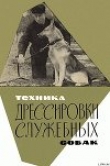
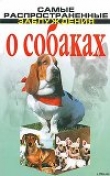

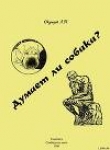
![Книга Ребенок и собака [Их добрые отношения. Советы опытного собаковода] автора Брайен Килкоммонс](http://itexts.net/files/books/110/oblozhka-knigi-rebenok-i-sobaka-ih-dobrye-otnosheniya.-sovety-opytnogo-sobakovoda-131932.jpg)
